The way we work is in an unprecedented state of flux. With the growing trend of remote work, offices are shifting their space from accommodating personal tasks to a group-first focus. While the huddle room tide has been rising for some time, the demand for spaces in which teams of all sizes can collaborate is continuing to grow. And for these spaces to function optimally as hubs for teamwork, they need technology to facilitate the creative thinking process.
A New Approach
As Millennials and Gen-Z employees make up more and more of the workforce, they’re bringing a lot of demands with them. One of these is the requirement that companies support their preferences for the way they like to work, a request that can put strain on an enterprise’s standards.
“IT departments prefer standardization in unified communication platforms and AV solutions for meeting rooms; however, employees are more productive when using their own devices and the UC technology of their choice,” said Lieven Bertier, segment marketing director, workplace at Barco. This was an inspiration behind the development of ClickShare, one of the most popular wireless collaboration solutions on the market. “Our range is perfectly suited for BYOM (bring your own meeting), a natural extension of BYOD, as it allows people to host a conference call using their preferred conferencing platform from their personal devices.”
According to Bertier, the ClickShare Conference range was designed to be truly agnostic, connecting to the AV USB room peripherals (speakerphones, soundbars, cameras) and working with the UC solutions of the user’s choice. “Starting a meeting is very intuitive, simple, and always the same: no downloads, manuals, training, or extra tools needed,” he said. Nevertheless, Barco offers apps for Windows, Android, Mac, and iOS devices to enable flexibility in connectivity.
Plug and Play
The ability for users to just plug in and present was also paramount for BenQ, according to Bob Wudeck, the company’s senior director of business development.
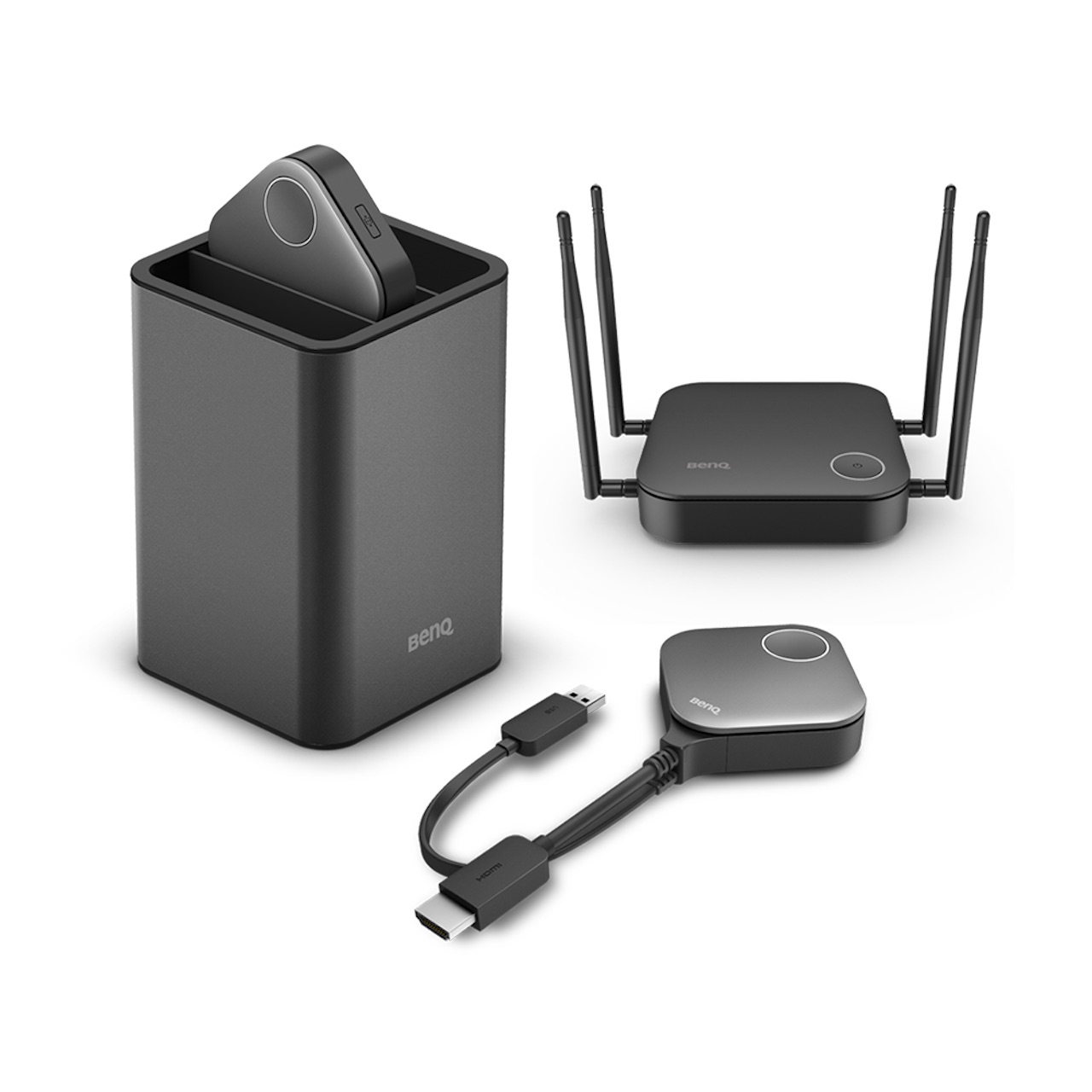
“Customers want an easy-to-use, secure system that allows them to share content without downloading software or an app,” he said. “This helps eliminate risks to their device and allows them to get started faster.”
BenQ engineered its latest solution, the InstaShow S WDC20, with flexibility, performance, and affordability in mind. “Not only is it completely app-free with 4K resolution support, it also is able to present more screens simultaneously on the display (up to four) than any other similar app-free screen mirroring system,” Wudeck said. “In addition, organizations aren’t limited by what devices they can connect; they can connect notebooks, Chromebooks, Blu-ray players, document cameras, digital signage players—essentially, anything with an HDMI out port.”
Airtame’s VP of product Simon Hangaard Hansen echoed the others’ sentiment that simplicity is paramount in this device category: “Customers want the technology they use to collaborate in offices and meetings to be hassle-free and reliable,” he said. And one major hassle in today’s technology landscape is that of interoperability. “This is why Airtame embraces a cross-platform approach, combining a suite of products that work together with other applications to make screen sharing, digital signage, and device management straightforward and reliable, no matter the size of the business,” he said.
According to Hansen, Airtame 2 is device agnostic—working with Windows, Chromebooks, macOS, Linux, iOS, and Android. “There are flexible presentation options, as customers can present using the Airtame app to one or many displays, simultaneously, or they can present using Google Cast, Miracast, and AirPlay,” he said. “Importantly, customers can even allow colleagues and guests to present, even when they’re on a different network.”
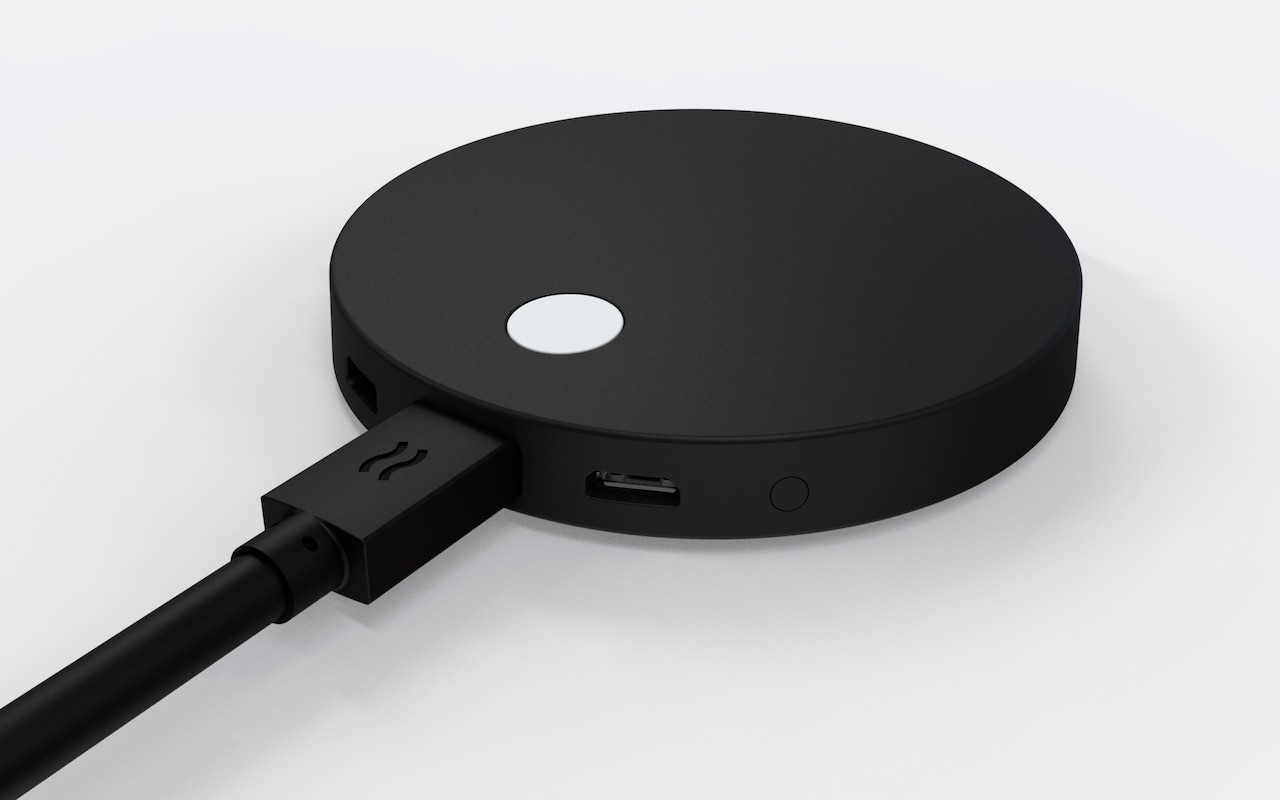
For WolfVision, the goal was to achieve wireless 4K screen mirroring with as little effort required on the end users’ part as possible. “WolfVision customers value Cynap’s unique app-free, button-free, mobile device-agnostic meeting room spaces, which enable wireless screen mirroring for all laptops, smartphones, and tablets,” said Christian Loacker, WolfVision global sales and marketing director. “We have found there is huge demand for systems such as Cynap Pure Pro that do not place restrictions on device compatibility, and are able to deliver a consistent user experience to every meeting participant.”
The company’s Cynap Pure solution is engineered to be set up out of the box and used immediately. It also offers prepared API modules for integration with third-party controllers, and APIs are available for customized room control system integration if required.
Doing it All
Of course, the ability to easily share content is just the beginning. “Organizations today demand a large range of needs from their meeting space presentation systems, including robust content sharing, videoconferencing, digital signage features, and more,” said Troy Suttle, VP of product marketing at Mersive.
The company designed its Solstice platform to provide all of the collaborative capabilities users need in a room, from high-resolution wireless content sharing to content manipulation with mark-up features, to bringing in remote participants via agnostic conferencing support through Solstice Conference. “While many meeting and collaboration solutions solve only one part of the problem for customers, Mersive takes a holistic approach to teamspace collaboration.” This approach even extends to room calendar integration and digital signage playback, delivering continued value from the system between meetings.

The complete ecosystem was also top of mind for Biamp when it acquired Huddle Room Technologies just before ISE in February. Now branded as its Huddle Hub, the solution is positioned as a flexible piece within its comprehensive meeting room suite. “We’re committed to ensuring that our room systems support all the UC solutions available today and ensure they are as convenient and high-performing as possible,” said Joe Andrulis, Biamp’s executive vice president of corporate development.
With this goal, Huddle Hub enables users to share content locally from their device directly to the room speakers and display, or launch a UC client from that same device to engage participants across the world using the room’s microphones and camera as well. “The distinctiveness of Huddle Hub is the combination of feature richness, performance, and how well it pairs with the rest of the Biamp product portfolio to provide a complete room solution,” Andrulis said.
With the aim of flexibility, Kramer designed its VIA family of collaboration solutions to not only support all manner of teamwork, but in a variety of verticals as well. “Uniting strengths is the key requirement for wireless collaboration,” said Yael Chicheportiche, product manager at Kramer. “The VIA Campus2, for example, fits perfectly the education applications, able to show up to six user screens on one main display or up to 12 screens on two displays, with full moderation capabilities for the teacher and remote control.”
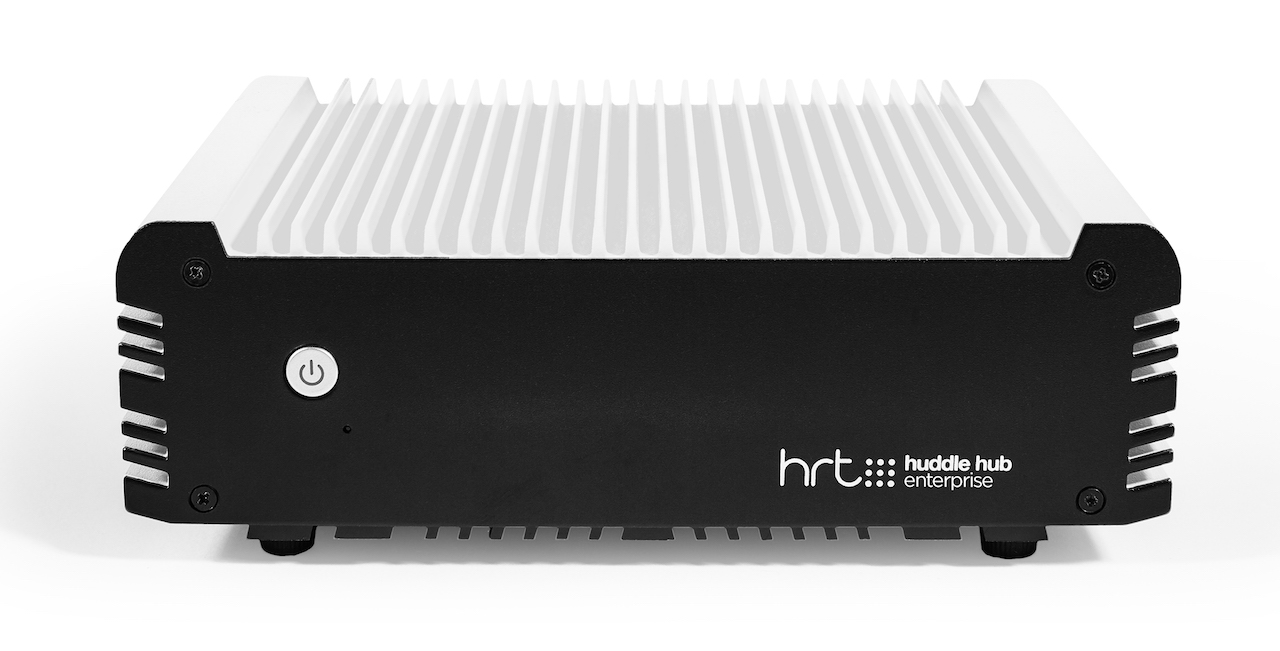
Make it Easy
End users demand simple tools that integrate into their workflows; tech managers require robust tools that simplify their rooms. “From an IT manager’s perspective, Kramer’s VIA technology joins the dots for seamless integration, with products that offer installation flexibility as well as features that make management a simple process—with cloud-based control for operability, software updates, monitoring, and so on,” Chicheportiche said. Kramer’s VIA Site Management (VSM) software enables IT administrators to configure, monitor, manage, and control all connected VIA devices. VSM can generate alerts on the system’s health and includes actionable reporting and analytic tools.
ScreenBeam also strives to simplify things for the tech manager. “They don’t want three boxes if they can do it with one,” said Jay Taylor, the company’s senior director of strategic alliances. “ScreenBeam helps reduce such complexity, which has benefits in both capital costs for hardware and labor and maintenance, saving companies significant money.”
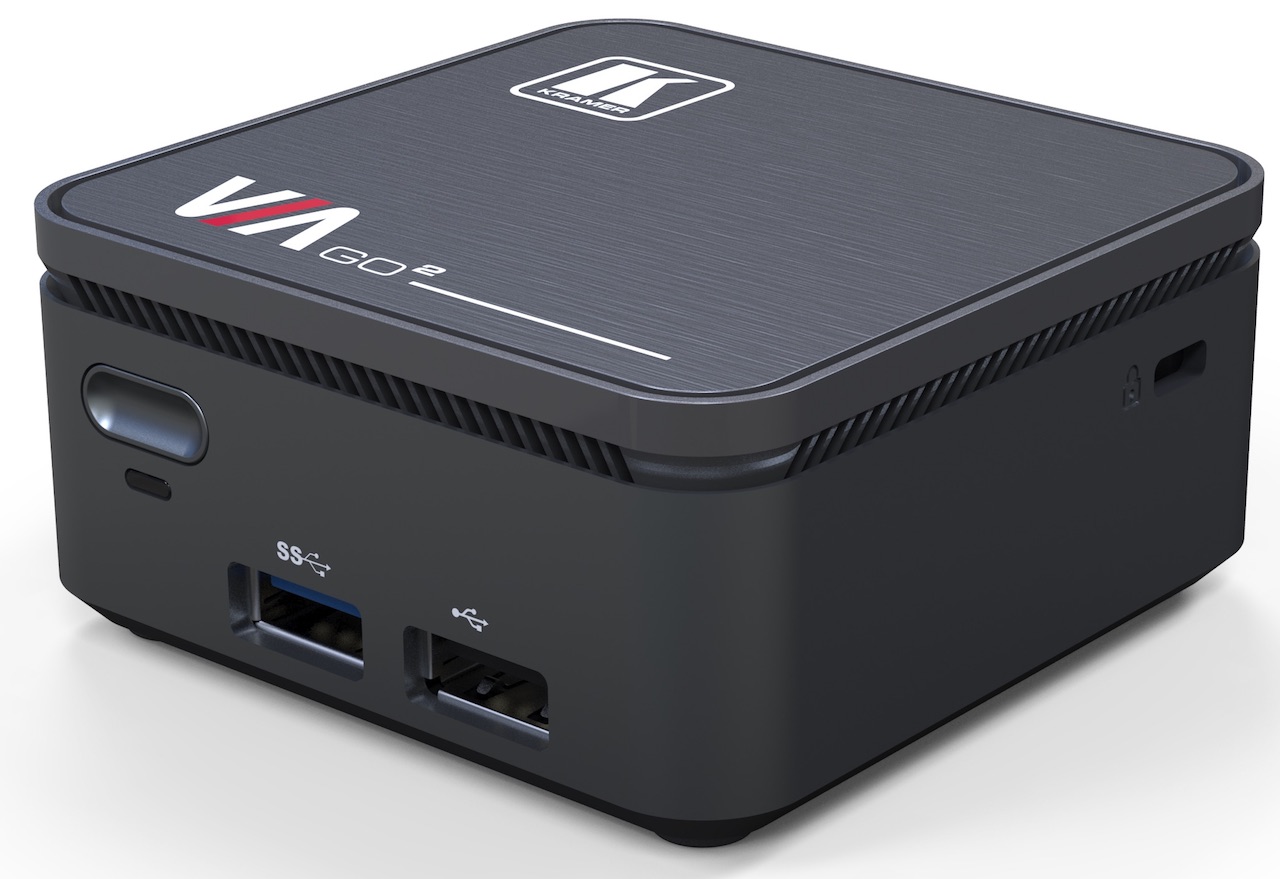
Further easing things on the administrator side, the ScreenBeam 1100 allows AV/IT managers to support both internal and external networks with a single device. “This makes deployment easier while providing more flexibility for different network policies and deployment requirements,” Taylor said. According to the company, ScreenBeam is also the only wireless collaboration provider that is a co-engineering partner with Microsoft. “With 1.2 billion Microsoft users worldwide, this partnership is significant,” Taylor said. “With ScreenBeam, users can wirelessly ink and annotate across the Office 365 environment, storing and sharing those notes with colleagues in meetings or through their natural workflow.”
Under Control
Of course, it would be difficult to deploy all of these products at scale if they lacked the ability for monitoring—and impossible if they didn’t meet stringent security requirements.
Like Kramer’s VSM, Biamp’s Huddle Hub includes management tools that allow users to monitor its availability, ensure performance, and make updates to firmware. Its security measures include utilization of a Unified Extensible Firmware Interface (UEFI) secure boot protocol, which guards against malware; WPA2-PSK technology for confidentiality; randomly generated passcode when a new session starts; and AES-128 encryption of all the video and audio streams.
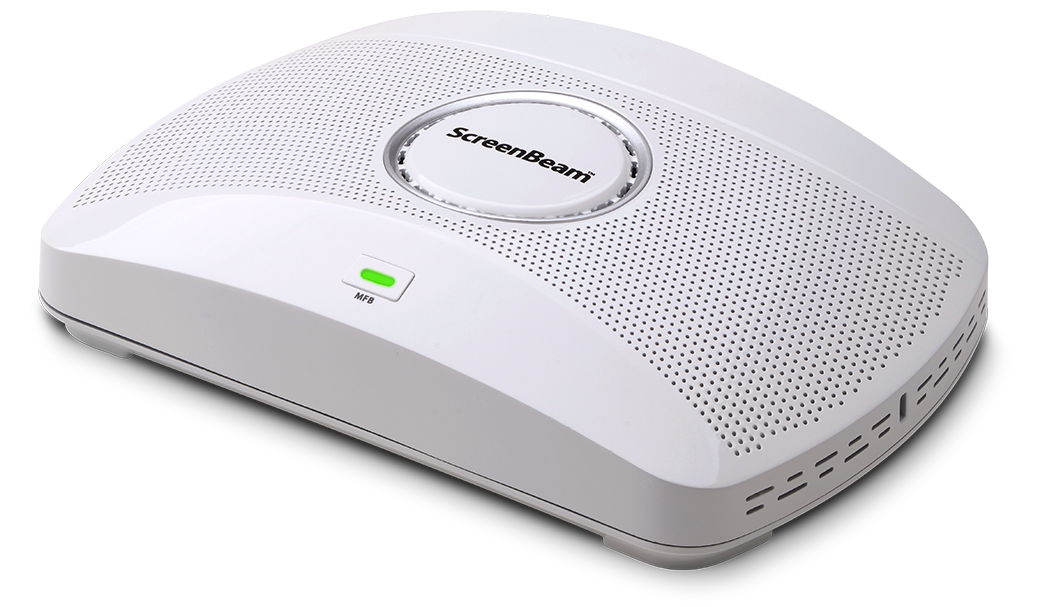
BenQ’s InstaShow family also features WPA2-PSK protection with AES 128-bit encryption for data security, and has been tested and certified by Onward Security as having no critical and high-risk security vulnerabilities. It also meets the requirements for California's Consumer Privacy Act.
Airtame Cloud fulfils the needs of tech managers to keep track of the status of all of their endpoints, enabling them to view and update device settings and monitor performance from anywhere. The company’s approach to security includes the ability to lock the Airtame 2’s settings panel with a password from within the device’s settings. When applying settings, HTTPS encryption is used between the managing computer and the Airtame being managed.
WolfVision provides remote administration tools for free via its vSolution Link Pro software. On the security front, all wireless data is encrypted, and IEEE 802.1X authentication protects the network and ensures that no devices are allowed access until authorized. A closed Linux operating system means that system modifications are not allowed, and this also keeps the system free from viruses and malware.
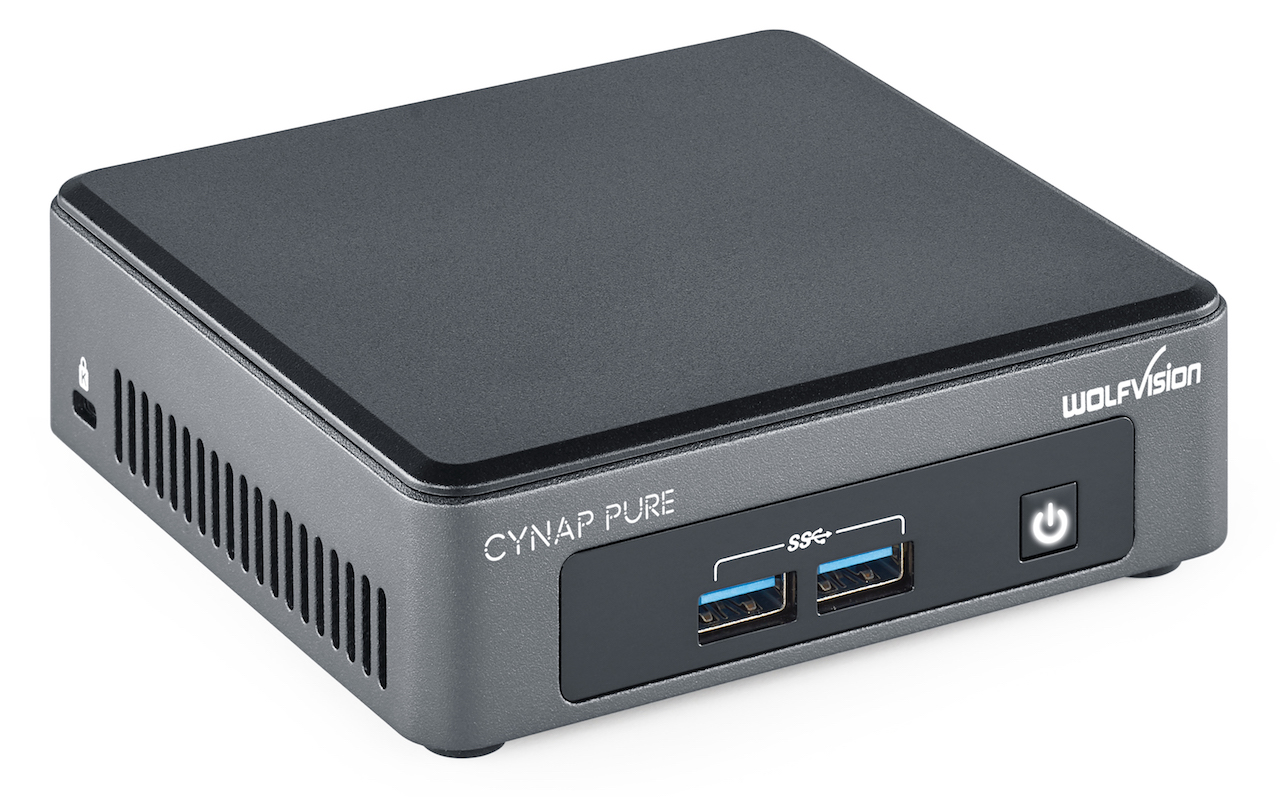
According to ScreenBeam, the company’s multi-network design is completely air-gapped so that network interfaces cannot be bridged, as there is no internal signal routing that might compromise network security. ScreenBeam provides three levels of security for the active connection, including connection-level security support for most enterprise network certificate-based security requirements, and session-level security with AES 128. The company also includes a remote CMS tool, allowing IT/AV departments to manage all the receivers in their deployment.
Mersive provides administrators with centralized monitoring and management, as well as analytics. “[This] allows admins to go beyond simply maximizing deployment uptime to help them optimize their meeting space ROI through data driven insights,” Suttle said. “All of this is supported by enterprise-grade security. Mersive has been deployed in the world’s most protected public and private organizations because we stay at the forefront of best security practices, implementing multiple layers of security to ensure every deployment remains safe from unwanted threats.”
“For tech managers it is paramount that solutions used by their employees are fully secure, easy manageable, and compatible with existing IT infrastructure,” said Barco’s Bertier. ClickShare devices feature ISO 27001 certification, enabling orgnaizations to deploy them in any infrastructure configuration they prefer: standalone, connected, or fully networked. “But real value comes when managing, monitoring, and updating the units with the XMS management platform or Overture.”

